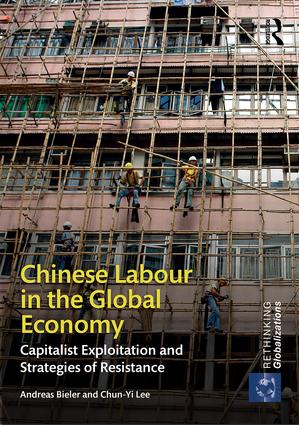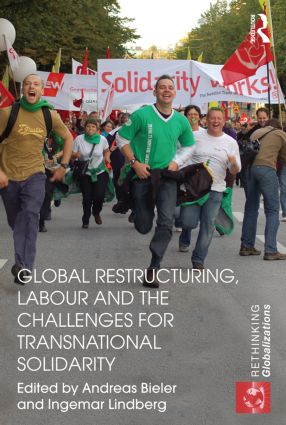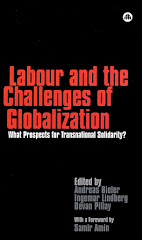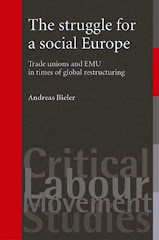In 2005, a coalition government
led by the Norwegian Labour Party took office. Four years later, it retained power
in the 2009 elections. Welfare spending continues to be high, an expansive
public sector has been maintained and trade unions continue to enjoy a strong
role in economic and social policy-making. In many respects, Norway has
successfully resisted the general direction of neo-liberal restructuring,
public sector cuts and undermining of the welfare state. In this blog post, I
will discuss how we can explain this apparent Norwegian exceptionalism.
 |
| Photo by xitus |
It is often argued that oil
wealth would explain Norwegian exceptionalism. And indeed, in contrast to other
developed countries, Norway has not had to incur a budget deficit in order to
stimulate the economy during the current global financial crisis. It could rely
on its oil wealth fund. However, as a leading trade unionist remarked to me in
an interview, the crucial institutions of the Norwegian political economy, the
gains made by trade unions, were all achieved before the oil wealth appeared on the agenda in the 1970s. Hence,
the key explanation needs to be looked for elsewhere.
Two main reasons can be identified for Norwegian
exceptionalism. First, in contrast to other small European countries, the
Norwegian production structure is comparatively little transnationalised.
Capital in Norway is characterized by the predominance of small and
medium-sized companies and, as a result, is comparatively weak (see
Bieler
2012: 234-5). In contrast to countries such as Sweden, dominated by large
transnational corporations, capital cannot dictate labour how to organize the
domestic political economy (see also
Globalisation
and the erosion of the Nordic model).

Second, the agency of trade
unions has been decisive. Prior to the 2005 elections, trade unions adopted a
more independent position from the Labour Party. LO, the main Norwegian trade
union confederation, carried out the project ‘You decide – LO on your side’.
Members were asked to send in proposals, from which 54 demands were selected
and submitted to all political parties for their comments. In turn, LO then
recommended its members to vote for those three parties, the Labour Party, the
Socialist Left Party and the Centre Party, which had endorsed most of the
demands. LO itself mobilised during the electoral campaign for a majority
coalition of these three parties. Importantly, LO did not decide to abandon the
Labour Party as a result of its dissatisfaction with the party’s neo-liberal
policies in 2000 and 2001. Nevertheless, it made clear that it was no longer
willing to support the Labour Party unquestioningly. Support for the other
parties of the electoral alliance and the request to endorse the demands,
developed through a consultation with trade union members, indicated clearly to
the party that it had to take seriously the unions’ opposition to restructuring
(see also
The
Power of Norwegian trade unions).
Moreover, the Norwegian Union of
Municipal and General Employees (Fagforbundet) realised that the balance of
power between capital and labour, on which the class compromise around the
welfare state had been built, had changed in Norway. In response, it
established the broad-based
Norwegian Campaign for the Welfare
State, which consisted of trade unions in the public and private sector
as well as a whole range of other social movements and NGOs, including the
Welfare Alliance, the Norwegian Farmers’ and Smallholders’ Union, several
feminist groups and a students’ organisation. The
Campaign for the Welfare State fulfilled two crucial functions.
First, through educational initiatives it mobilised support for the welfare
state and against neo-liberal restructuring, and here especially the idea that
the introduction of competition would deliver efficiency gains in the public
sector. Second, it broadened the social basis of resistance against public
sector restructuring and, thus, established a balance of power with capital.
Overall, both the politically
more independent position of the trade unions vis-à-vis the Labour Party and
the broad-based Campaign for the Welfare
State put strong pressure on the Labour Party. As a result of these campaigns,
the Labour Party, as an exception in Europe, moved to the left prior to the
2005 elections and has actually delivered policies in the interests of workers
and wider society. Nevertheless, employers and centre-right parties continue to
put pressure on the Norwegian government towards budget cuts and public sector
restructuring. The Labour Party itself may be tempted to move again towards
this policy course. Successes as achieved in 2005 constantly need to be
re-affirmed and trade union agency for the welfare state will remain crucial.
This blog post is based on the article
Prof. Andreas Bieler
Professor of
Political Economy
University of
Nottingham/UK
9 July 2012















